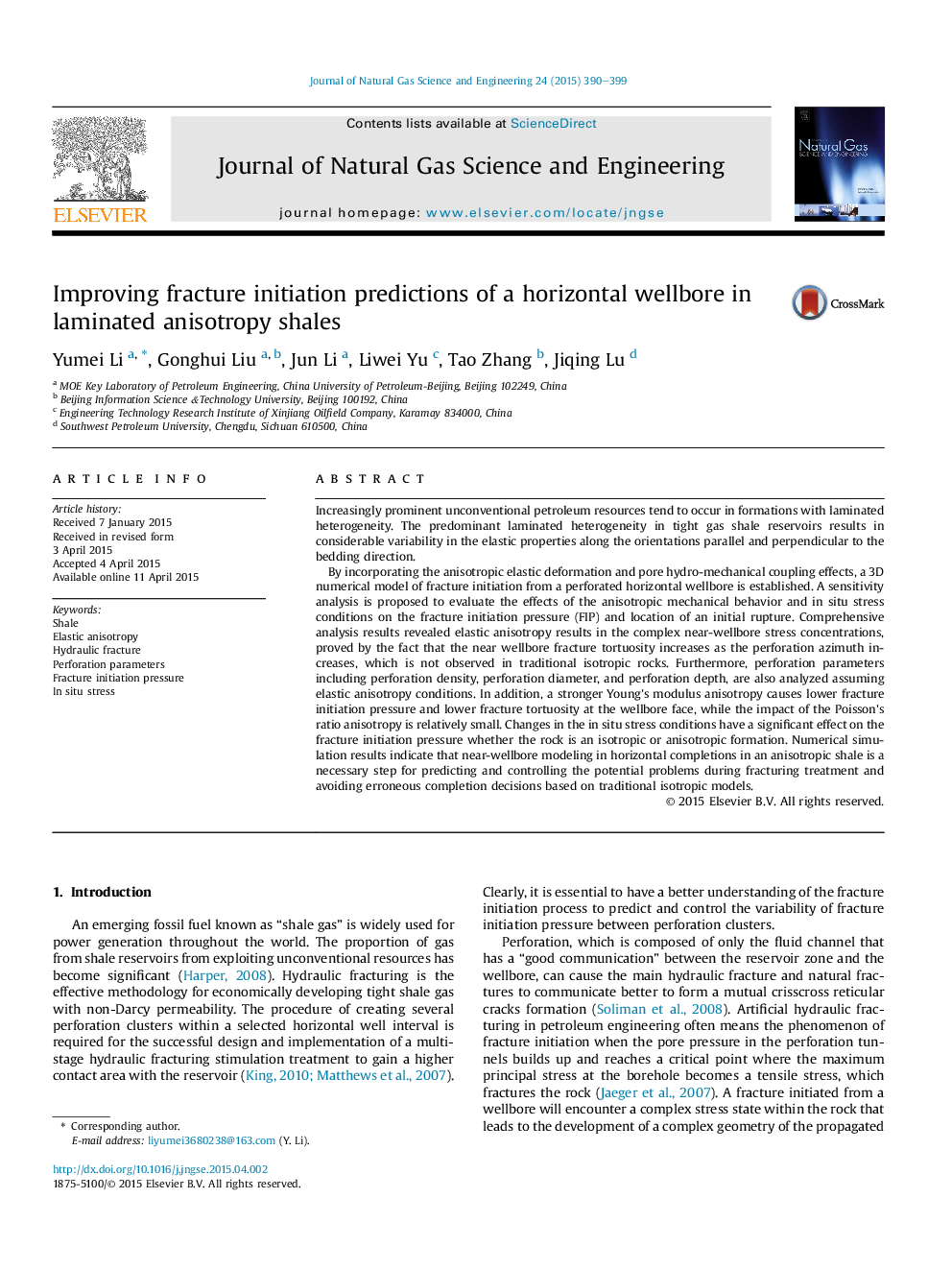| Article ID | Journal | Published Year | Pages | File Type |
|---|---|---|---|---|
| 1757431 | Journal of Natural Gas Science and Engineering | 2015 | 10 Pages |
•A 3D numerical model of fracture initiation from a perforated horizontal wellbore is established.•The numerical model considers elastic anisotropy and pore hydro-mechanical coupling effects simultaneously.•The degree of elastic anisotropy and the in-situ stress conditions affect the fracture initiation pressure (FIP).•Young modulus anisotropy and Poisson ratio anisotropy on fracture initiation pressure (FIP) are discussed.•The changing of the in-situ stress conditions have a significant effect on the fracture initiation pressure.
Increasingly prominent unconventional petroleum resources tend to occur in formations with laminated heterogeneity. The predominant laminated heterogeneity in tight gas shale reservoirs results in considerable variability in the elastic properties along the orientations parallel and perpendicular to the bedding direction.By incorporating the anisotropic elastic deformation and pore hydro-mechanical coupling effects, a 3D numerical model of fracture initiation from a perforated horizontal wellbore is established. A sensitivity analysis is proposed to evaluate the effects of the anisotropic mechanical behavior and in situ stress conditions on the fracture initiation pressure (FIP) and location of an initial rupture. Comprehensive analysis results revealed elastic anisotropy results in the complex near-wellbore stress concentrations, proved by the fact that the near wellbore fracture tortuosity increases as the perforation azimuth increases, which is not observed in traditional isotropic rocks. Furthermore, perforation parameters including perforation density, perforation diameter, and perforation depth, are also analyzed assuming elastic anisotropy conditions. In addition, a stronger Young's modulus anisotropy causes lower fracture initiation pressure and lower fracture tortuosity at the wellbore face, while the impact of the Poisson's ratio anisotropy is relatively small. Changes in the in situ stress conditions have a significant effect on the fracture initiation pressure whether the rock is an isotropic or anisotropic formation. Numerical simulation results indicate that near-wellbore modeling in horizontal completions in an anisotropic shale is a necessary step for predicting and controlling the potential problems during fracturing treatment and avoiding erroneous completion decisions based on traditional isotropic models.
